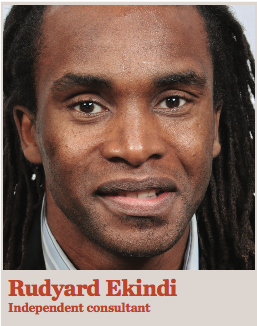
One can acknowledge the strengths of the investment management industry based on its sheer size and annual growth rates. But the depth of pension and social security deficits, recurrent and ever more damaging financial crises, and more stringent regulatory and capital requirements all urge us to admit that there is a need to do things better.
The analogy with John Gray’s famous 1992 book, Men Are From Mars, Women Are From Venus, can be helpful when analysing how asset owners and asset managers interact. They mean well to each other. Asset owners, for the purposes of this analogy, want to be able to trust asset managers but will not give their trust easily, and they can end the relationship at the first sign of perceived misalignment. Asset managers think they have the (technical) knowledge, often do not listen even when they think they do, and are eager to take the relationship to the next level.
I will cover a few practical examples I have encountered in my career that highlight the common issues in an asset owner/asset manager relationship. Then I will propose a model that can be used to improve the effectiveness of interactions between these two groups.
Case 1: An asset owner asks one of its investment managers which risk model it would recommend. Proud of the long and cumbersome internal exercise that the asset manager performed a few years back when it had to choose a risk model for its own organisation, the asset manager will show the pros and cons of all the options it looked at and recommend the one it is using. The asset manager might even think that it would be badly perceived by the asset owners if it put forward a risk model different to the one it is using for its own portfolios and which has been accepted by the client. But the asset manager overlooks that the asset owner wants a model that fits its own governance. The asset owner is ready to accept a different option if it is proven to be better suited. In particular, the requirements for monitoring a global, multi-asset and multi-manager portfolio with a long-term horizon ought to be a good distance apart from those necessary to control a single-asset/single-style strategy.
Case 2: An asset manager describes the risk-based strategy it uses for portfolio construction allocating between minimum volatility, maximum diversification, equal risk contribution and risk parity. The pros and cons are presented in absolute terms supported by rigorous academic research. A richer discussion can take place if the asset manager can articulate the properties of these strategies relative to the needs of the asset manager. Mostly the argument would be that one strategy dominates in a specific market environment and that combining them can bring diversification benefits. Yet the particulars of the asset manager might justify the use of a very specific mix or even only one of these solutions.
Case 3: Discretionary decisions are used by active managers. Then a lot of resources are spent to show that the asset manager has made ‘the right call at the right time’, yet again in absolute terms. What would help the asset manager more is how the discretionary decision affects the pay-off profile over the short and long term, and how consistent it is with other decisions already implemented. Then the asset manager can present a relevant measure for the value added of the discretionary decision; in simple cases using a closed formula1 and in more complex ones using numerical methods2 .
Case 4: Perceptions about competition. Asset managers like to show how they compare with other asset managers, but the worst example is when they do competitor bashing. Considerably less resource is spent and research undertaken to show how well the product or solution fits the specific needs of each asset owner. Asset managers take comfort in the idea that the asset owner or their consultant will do the analysis to establish the fit between their proposition and the investor’s needs. In other words, the asset manager devotes resources to show what it does better than the competition, irrespective of how relevant it might be to the needs of the investor. And if it were relevant it would be necessary to show why. Furthermore, the competition is not only with other asset managers, but also with internal investment management in the case of larger asset owners.
Given this diagnosis, what medicine is at our disposal? As discussed above, resources are wasted and opportunities missed for both asset owners and asset managers.
In a word, I believe openness to be the most important mutually beneficial element. Each party needs to know what the other is capable of and willing to achieve, within the reasonable requirements of a business and commercial transaction.
In practice, the resources and attention paid to each aspect of the relationship need to be aligned with the needs of the asset owner and the means of the asset manager. The asset manager should not avoid using a third party to help where it would not be strong enough. The asset owner should be open and clear on its priorities and reassure the asset manager that it is not expected to be good for all areas.
Beside the technical, operational, and legal complexities involved, I also find that time management is a recurrent challenge. Markets move very fast; the industry evolves pretty fast as well. Yet I would argue, in some cases, that taking enough time to resolve something or launch an innovation would work better than doing things quickly.
For instance, asset managers could take more time to articulate their value proposition in a way that is clearly accessible to asset owners. This would prove to be a competitive advantage. Asset owners could take more time to review their selection criteria and make them accessible up front. This would provide them with a quicker access to the services they need most.
One aspect will warrant greater attention than the others: the governance of the asset manager. For asset owners, governance cycles are longer, the horizon of the decisions made are longer than for asset managers, and the layers of validation and benchmarking are numerous and complex. Asset managers might struggle to integrate these aspects into their value proposition and processes. Asset owners need to be ready to allow asset managers the time to learn to integrate these into their investment decisions and the services they offer.
A lot of progress has been made since September 2001 and the 2008 crisis to make our industry more robust. Regulatory and capital requirements applicable today impose rules that will allow only the strong and efficient to survive. This short article has discussed modern investment management from a different perspective – the relationship model between asset owners and asset managers. Improving this model requires neither legislation, new academic thesis, or computing innovation. It requires an open and sounder dialogue where relationships will evolve naturally into profitable partnerships for both parties involved.
Footnotes:
1 A readily available mathematical formula that resolves the issue
2 Because no single formula exists, an algorithm is used to get as close as possible to the optimal solution
Rudyard Ekindi was formerly head of quantitative strategies at Credit Suisse and investment director at NEST


















No comments yet